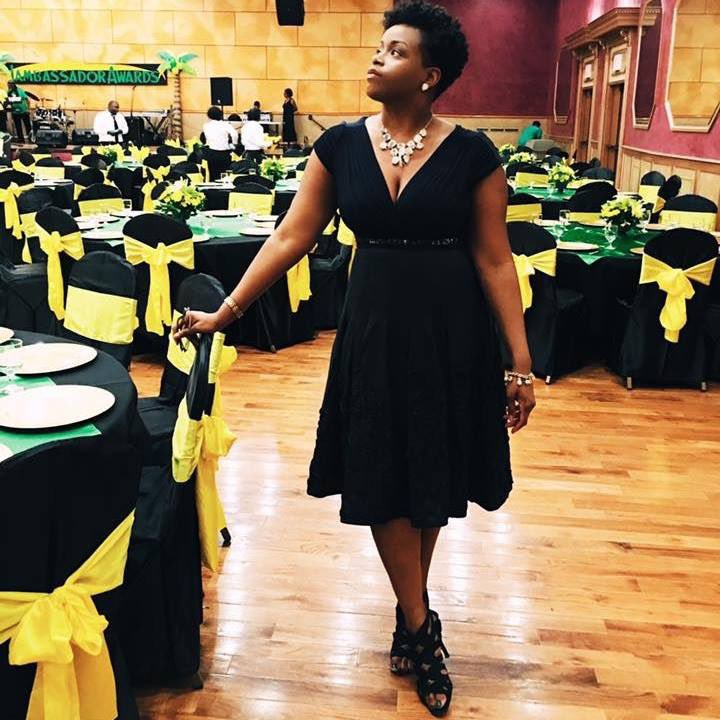Ruth is a strange and beautiful book--beautiful because of its characters’ virtues and faithfulness,
but strange because of some of its literary features.
Why, for instance, at the Book’s climax,...
And why does the text provide us with so many details about Ruth and Boaz’s night-time encounter?
Some possible answers are set out below.
But first, of course, a few numerical remarks.
The number 10 is prominent in Ruth.
Naomi sojourns in Moab for 10 years.
Boaz gathers 10 elders to serve as witnesses for him.
And ch. 4 ends with a ten-fold genealogy, strung together with 10 occurrences of the vb. הוליד = ‘beget’.
The law of Moses--which, of course, is based around the 10 words/commandments--is central to what transpires in the book of Ruth.
Ruth’s is a story about the demands of Israel’s law and the community defined by it.
The law simply requires landowners not to ‘over-harvest’ their fields (to allow ‘the poor’ and ‘the sojourner’ to glean in them: Lev. 19.9, 23.22).
The law simply requires Boaz to buy back Naomi’s (recently sold) land (Lev. 25.25-30),
but Boaz requires not only the land, but Naomi and Ruth to be provided for (4.5),
Equally prominent in Ruth is the number 12.
The name ‘Ruth’ occurs 12 times.
The vb. ‘glean’ (לקט) occurs 12 times (always with Ruth as its subject).
The most common conjugation of לקט is לקטה = ‘she gleans’,
The God of Israel is referred to 24 times (יהוה x 18, אלהים x 4, שדי x 2).
And the root גאל = ‘redeem’ occurs 24 times (גאל x 22, גְּאֻלָּה x 2).
Like that of the number 10, the prominence of the number 12 is significant.
And, appropriately, the person who facilitates her incorporation is Boaz, Eli-Melech’s מוֹדָע--a word with a gematrial value of 10 x 12 = 120.
The text of Ruth is full of wordplay and pleasant literary touches.
For instance: at the book’s outset, Naomi’s sons are said to ‘take’ (נשא) themselves wives (1.4),
which is an unusual choice of verb. (לקח would be more common.)
i.e., the story of Ruth’s journey from Moab to Judah (and from peril to security).
Ruth is ‘taken’ (נשא) in marriage by one of Naomi’s sons (1.4).
And Ruth eventually becomes a provider for Naomi as she ‘carries’ (נשא) an ephah (אֵיפָה) of barley back to her.
Ruth chooses to ‘leave’ (עזב) her family rather than ‘leave’ (עזב) Naomi (1.6, 2.11).
And the God of Israel does not ‘overlook’ (עזב) Ruth’s kindness to his people (2.20).
Wordplay also features in Naomi’s (self-proclaimed) change of name (cp. 1.20).
while the name מָרָא means ‘young lady’ (cp. Ugar. ⟨mr⟩ = ‘son’, Aram. ⟨mārā⟩ = ‘mistress’, OAkk. ⟨mārtu⟩ = ‘daughter, girl’),
...and hence to describe a transition from a state of ‘pleasantness’
(נָעֳמִי > נעם)
So far so good (perhaps).
But what about our original questions?
Why the genealogy?
Why such a detailed narration of Boaz and Ruth’s night-time encounter?
Boaz and Ruth are not isolated figures on the stage of the Biblical narrative; they are people with a history and a context.
Boaz is a descendant of Judah via Tamar.
Ruth’s history is little better (and possibly worse).
Ruth is a Moabite.
As such, she is a descendant of Lot,
Unsavoury though they may be, our text deliberately highlights both of these details:
4.18-22 explicitly traces Boaz’s ancestry back to Perez,
Meanwhile, Ruth is repeatedly referred to as ‘the Moabite’ (1.22, 2.2, 21, 4.5),
which is quite unnecessary.
Our author must, therefore, have a point to make, which I take to be as follows.
it is the convergence of two long and complicated histories and lineages--the reassociation of a rejected family tree within the line of promise.
namely the encounters between Judah and Tamar and between Lot and his older daughter.
First, in all three cases, people leave the land to which God has appointed them.
Lot departs from Abraham to reside in Sodom and Gomorah;
and Naomi leaves Israel to sojourn in Moab.
Judah’s two sons (Er and Onan) are smitten by YHWH;
Lot’s sons-in-law are swept away along with Sodom and Gomorrah;
and Naomi’s two sons die in Moab.
A family line seems unable to continue, and an ancestral name is endangered.
Judah is reluctant to give his third son to Tamar in marraige since he sees Tamar as a ‘black-widow-like’ character...
Lot is scared to intermingle with the inhabitants of his new locale in Zoar (Gen. 19.29-30);
and Naomi and Ruth have little to offer a potential husband in light of: a] Naomi’s age, and b] Ruth’s status as a Moabite,
Third, in all three cases, a woman decides to take matters into her own hands in order to preserve her family line; put more specifically, a woman seeks to conceal her identity and approach the nearest ‘eligible’ male.
Lot’s daughters approach him under cover of darkness;
and Ruth follows the lead of Lot’s daughters.
Judah has been at a sheep-shearers’ festival,
Lot has been plied with wine by his daughters;
and Boaz is merry with wine at the time when Ruth approached him.
As a result, none of the male procreators-to-be are aware of who has approached them.
Judah is Tamar’s father; Lot is (obviously) the father of his daughters; and Boaz is considerably older than Ruth (2.5-6, 3.10-11).
For instance, the names of Naomi’s sons seem to anticipate their deaths, which is also true of Judah’s sons’ names.
and the name ‘Chilion’ (כִּלְיוֹן) resonates with כִּלָּיוֹן = ‘destruction’.
In much the same way, the name ‘Er’ (עֵר) resonates with רע = ‘evil’ (cp. Gen. 38.7),
Furthermore, when Naomi sets out to return to Judah, she says it is unfeasible for her to marry and bear a son, and for Ruth and Orphah then to wait until he grows up (1.12-13),
Linguistic parallels also contribute to the picture.
Ruth’s ‘nearer redeemer’ is reluctant to raise up children with Ruth since it will ‘mar’ (שחת) his estate,
Ruth therefore preserves her line with the help of חֲמוֹת = ‘a mother-in-law’,
while Tamar preserves hers with the help of חֹתָם = ‘a seal’ (an anagram of חֲמוֹת) obtained from Judah.
Naomi’s ref. to חסד עשיתם עמדי = ‘the kindness...done to (her)’ resonates with Lot’s ref. to חסד עשית עמדי = ‘the kindness...done to (him)’ (cp. 1.8 w. Gen. 19.19).
Different arrangements of the consonants עמרה are also of significance.
while Lot leaves ‘Gomorrah’ (עֲמֹרָה) to dwell in a ‘cave’ (מְעָרָה) outside Zoar (cp. 2.15, 3.7 w. Gen. 19.30).
(Such examples can easily be multiplied.)
Ruth’s encounter with Boaz now acquires an extra dimension.
As we read of Ruth’s journey to Boaz’s floor, we begin to feel rather uneasy--a fact not alleviated by our text’s suggestive language.
Feet are uncovered.
And a ‘grain pile’ is mentioned (ערמה from ערם = ‘to pile up’),
which resonates with terms like עָרוֹם = ‘nakedness’ and עָרְמָה = ‘craftiness’.
Is another unsavoury sexual encounter about to mar the lineage of Judah?
Recall, for instance, how Jacob is able to deceive Isaac because he fails to recognise (הכיר) his disguise,
and how Laban fails to ‘recognise’ (הכיר) what Rebekah has taken from him,
The circumstances are, therefore, against Boaz and Ruth,
Sin crouches at the door.
And, when Boaz wakes up and notices a female whom he does not recognise,
Yet, thankfully, things pan out very differently to what we expect.
A clean break from the past is made.
‘Who are you?’, Boaz asks,
to which an honourable reply comes back: ‘I am Ruth’.
The ball is then back in Boaz’s court,
‘May you be blessed of YHWH’, he says.
‘Lie down until the dawn’ (3.13).
As such, we have a clean break from the past.
Things are finally put right, and are done in the proper manner.
And Boaz and Ruth’s story thus begins to diverge from the stories of Judah and Lot.
Whereas Tamar covers herself in order to conceal her identity, Boaz covers Ruth with his cloak--i.e., he ‘spreads his wings’ (כנפים) over her--in the full knowledge of who she is.
as well as the way in which Ruth has found shelter ‘under the wings’ of Israel’s God (cp. לחסות תחת כנפי אלהי ישראל in 2.12).
whose name is an anagram of the שמלה = ‘garment’ worn by Ruth (3.3) and refers to a kind of ‘garment/cloak’.
and the manner in which it is undone is important to note.
Whereas things go wrong in the case of Tamar, who sits at the gate to Enaim, and of Lot, who sits at the gate of Sodom, Boaz goes to the gate in order to do set things right (ch. 4).
Ruth is a story about major sins,
but it is also a story about the significance of what may seem (in the grand scheme of things) to be minor details.
but by means of the faithfulness and sense of covenantal duty of three apparently insignificant individuals--viz., Naomi, Ruth, and Boaz--,
These three individuals could never have dreamt of the eternal consequences of their actions,
but Naomi, Ruth, and Boaz allowed the line of Perez to take root in Bethlehem
In the dark days of the Judges, faithful men and women could still be found in Bethlehem (despite Judg. 17-21!),
May we, therefore, take Ruth’s lessons to heart.
Plain old-fashioned faithfulness to our families, to our duties, and to the foreigners in our midst may not gain us too many applause here and now,
The end.
Credits: Daniel Block (‘Judges & Ruth’), Rabbi David Fohrman (Videos on ‘Shavuot’), Ellen Van Wolde (‘Ruth in Dialogue with Tamar’).











